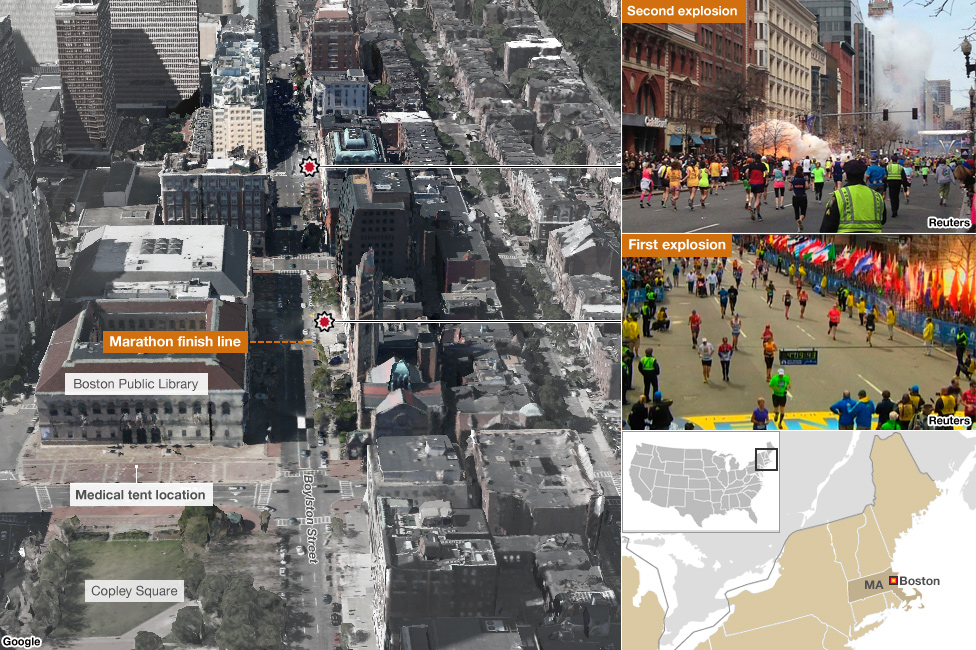Three people were killed and more than 170 injured - some of them seriously - in the blasts. One of the dead was an eight-year-old boy.
The first explosion came about two hours after the winners crossed the finishing line of the Boston Marathon.
Continue reading the main storyThere was initial confusion and panic at the sound of the blast. At least one runner was knocked off their feet, while police and spectators ran to help those caught in the blast.
Just a few seconds later, there was another explosion more than 70 metres (76 yards) farther back down the street from the first blast.
The blasts left three people dead and more than 170 injured
Plumes of smoke rose above the street and the road was showered with glass from windows up to three stories above.
Rescue workers tore down temporary fencing to get to the blast site. Pictures showed pools of blood on the ground.
Many of the victims suffered injuries to the lower leg and shrapnel wounds, as well as ruptured ear drums.
The police investigation centred initially on an area of the city, about one mile long and three blocks wide, which was cordoned off by police. Many buildings, like the Boston Public Library and local shopping malls, were closed for business after the attack.

A search, thought to be related to the inquiry, was carried out at a flat in the Revere district of Boston. Officers left the flat carrying a selection of bags and other material.
Some 23,000 runners took part in the race, which attracts more than 500,000 spectators along the streets of Boston. It is held on Patriots' Day, a Massachusetts state holiday which commemorates the first battles of the American Revolution in 1775.
The four-hour mark in the race is typically a very crowded time near the finishing line - because it is when most of the recreational runners are likely to be completing the race and friends and relatives gather to greet them.
Boston police said they had received no specific intelligence about any threat to the race. A White House official said the bombings were being treated as an act of terrorism.
~RS~q~RS~~RS~z~RS~42~RS~)


 Moment of first explosion
Moment of first explosion
 'I heard explosion'
'I heard explosion'
 Reporter films explosions
Reporter films explosions
 FBI probes 'terror' blasts
FBI probes 'terror' blasts
 Student heard 'loud booming sounds'
Student heard 'loud booming sounds'
 Deadly tornado rips through Oklahoma
Deadly tornado rips through Oklahoma